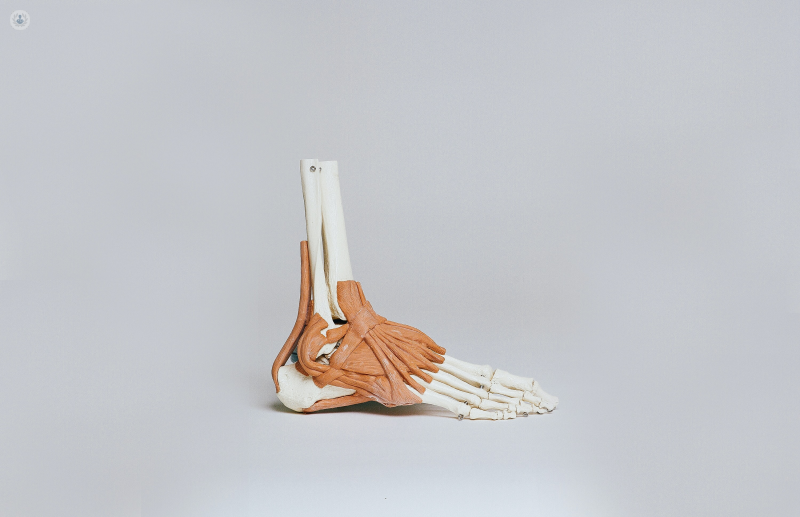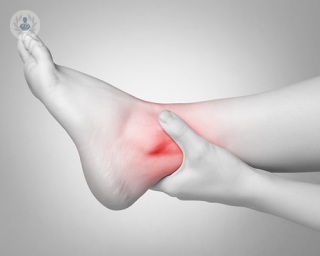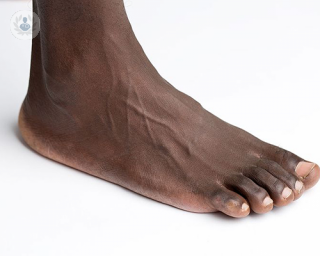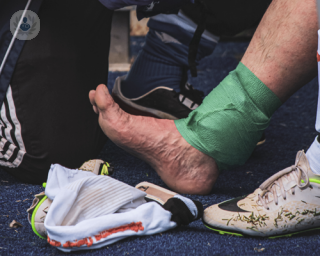Ankle
Mr Jasdeep Giddie - Orthopaedic surgery
Created on: 11-13-2012
Updated on: 08-10-2023
Edited by: Sophie Kennedy
What is the ankle?
The ankle is the joint that connects the foot to the leg and is important for being able to walk, run, or jump. It can be affected by a variety of injuries and conditions that can affect movement. The ankle is made up of three bones:
- Tibia (shin bone)
- Talus (sits above the heel bone)
- Fibula (runs next to the tibia)
In addition, the bony protrusions on your ankle are named as follows:
- Lateral malleolus – on the outside of the ankle at the base of the fibula.
- Posterior malleolus – at the back of the ankle at the base of the tibia.
- Medial malleolus – on the inside of the ankle, forming part of the tibia’s base.

Ankle function
The ankle can be described as a hinge-type joint with movement being allowed in one direction – both up and down. Other direction movements are allowed by other joints in the foot.
Pathologies of the ankle
- Sprained ankle – usually caused by an accidental twisting or turning motion to the ankle, damage to one of the ankle ligaments results.
- Breaks and fractures – result when any three of the ankle bones is fractured or broken. Tibia and fibula breaks and fractures are most common.
- Achilles tendinopathy (tendinitis and tendinosis) – inflammation and/or thickening of the Achilles tendon can cause pain, restricted movement and stiffness.
- Arthritis of the ankle – caused by gradual wear and tear
- Tarsal tunnel syndrome – caused by compression of the posterior tibial nerve, resulting in pain, the feeling of burning and pins and needles.
Treatments for ankle problems:
Many ankle injuries can benefit from the RICE method; Rest, Ice, Compression and Elevation, as well as pain medication. Other ankle injuries, such as breaks or fractures will require immobilisation in either an ankle cast or boot. More serious ankle problems may require surgery.
Which specialist treats ankle problems?
Orthopaedic surgeons may specialise in treating conditions of the foot and ankle.

















